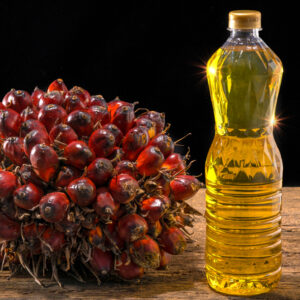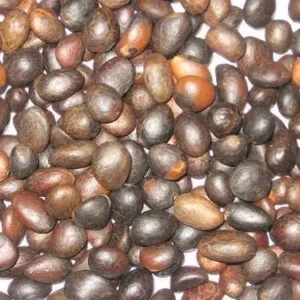Specifications
- Moisture Content: ≤ 12%
- Crude Protein: 14-16%
- Crude Fiber: 15-17%
- Oil Content: ≤ 8%
- Ash Content: ≤ 7%
- Energy Value: Approximately 12 MJ/kg
- Packaging: Polypropylene bags, 50-100 kg per bag or bulk delivery in containers.
Health Benefits
- Protein Source for Livestock: While not directly consumed by humans, the high protein content in palm kernel cake ensures healthier livestock, indirectly contributing to human nutrition through better-quality animal products.
- Sustainability Benefits: Its use as animal feed reduces waste and promotes an eco-friendly cycle, indirectly supporting healthier environments.
- Improves Animal Health: The residual oil and nutrients in palm kernel cake contribute to livestock’s digestive and overall health, enhancing the quality of the milk, meat, or eggs they produce for human consumption.
Applications of Palm Kernel Cake
-
- Animal Feed: A high-protein supplement for livestock, particularly cattle, goats, and poultry.
- Fertilizer Production: Used in organic fertilizers due to its residual nutrient content.
- Energy Generation: Occasionally processed as biomass fuel for renewable energy applications.
Frequently Asked Questions(FAQs)
Q: What is palm kernel cake?
A: Palm kernel cake is the solid residue left after extracting oil from palm kernels. It is primarily used as animal feed.
Q: What animals can be fed with palm kernel cake?
A: Palm kernel cake is commonly used as feed for cattle, sheep, goats, poultry, and swine due to its protein and energy content.
Q: How is palm kernel cake stored?
A: It is stored in dry, ventilated conditions to prevent mold growth and ensure quality preservation.
Q: Is palm kernel cake used for anything besides animal feed?
A: While its primary use is animal feed, palm kernel cake is sometimes used as a biomass fuel in energy production.
Q: Can palm kernel cake be used as an organic fertilizer?
A: Yes, it can be composted and used as an organic fertilizer due to its nutrient content.





Reviews
There are no reviews yet.